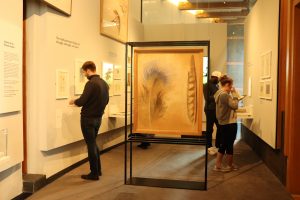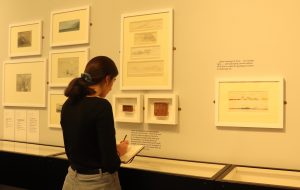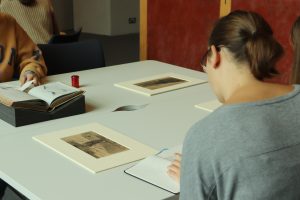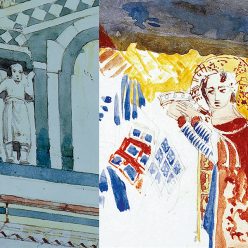Dr. Sarah Casey, Senior Lecturer in Drawing and Installation at Lancaster Institute for the Contemporary Arts, writes,
In his Elements of Drawing (1857), Ruskin wrote ‘I believe that the sight is a more important thing than the drawing; and I would rather teach drawing that my pupils learn to love Nature, than teach the looking at nature that they may learn to draw’ (John Ruskin, The Elements of Drawing, 1970 edition , p.13).

In other words, he advocated drawing as a means for seeing and understanding the world around us. This ethos of using drawing to better know the world also underpins the learning objectives of Lancaster University’s undergraduate module ‘Documentary Drawing’ taught by Gerry Davies and Sarah Casey to students in Lancaster Institute for the Contemporary Arts. The module is structured around a series of weekly challenges each requiring students to adapt their graphic approach to best capture the specificities of the environment and subject matter presented to them. What better way to introduce this approach to drawing than visit the current exhibition The Ruskin Museum of the Near Future?
So, last week, a group of 20 students came to The Ruskin armed with notebook and pencil. Students were introduced to Ruskin’s approach to drawing and saw first hand examples of the way he and other artists examined a range of subjects – from environment to architecture – using graphic means. Their task was to explore the exhibition and identify drawings of particular interest from which to make a transcription. In keeping with the module aims, no cameras are allowed. The challenge was to identify point of interest and work out how to make a record of these using only their notebook and pencil.

In addition to viewing the exhibition, the students also had the opportunity to work from collection items in the study room. A number of notebooks and drawings from the archive had been brought out specifically for this purpose. For many students, this was their first archival experience. The opportunity to learn how an archive works, the protocol around studying archival material, such as restrictions on drawing materials, touching and liquids all formed part of their training as investigative drawers.

So, after two hours of almost hallowed silence and deep concentration, we were exhausted. But we had at least six of drawings each to take away as a reminder of this wonderful opportunity and of our capacity to see the world more clearly, when we slow down and take the time to draw it.
